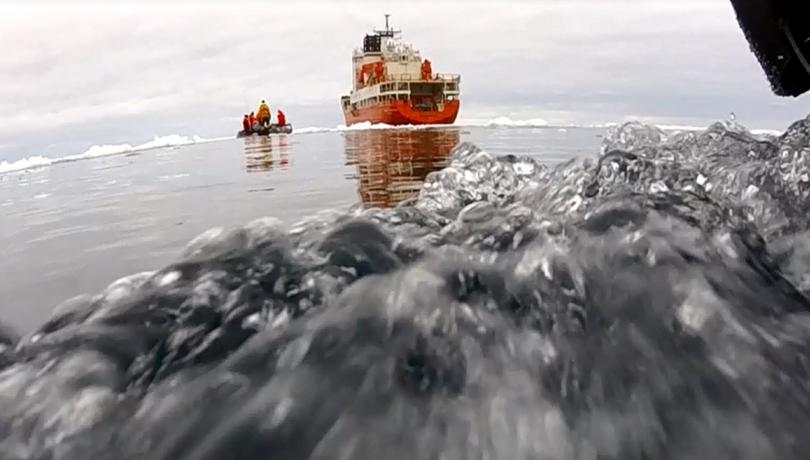Scientists at ICM have developed an innovative model based on satellite data to predict across the Southern Ocean isoprene concentration, a gas produced by phytoplankton that contributes to cloud formation and has the potential to affect the climate.

Isoprene is a gas produced by phytoplankton that oxidises in the air to form atmospheric particles. In remote oceans like the Southern Ocean, where the formation and brightness of clouds largely depend on the concentration of atmospheric particles, marine isoprene emissions have the potential to affect the climate.
However, its regional emission is poorly quantified and therefore climate models do not perform well because they do not get the simulation of clouds right. Given this, to improve the picture of isoprene concentrations and emissions across the Southern Ocean is essential for a better prediction of the effects of climate change in the region.
To that end, the journal Geophysical Research Letters has now published the first model for retrieving isoprene concentration and emission in the Southern Ocean from satellite data. The study, in which have participated several researchers from the Institut de Ciències del Mar (ICM) in Barcelona, is led by Rafel Simó, research professor and head of the Marine Biogeochemistry, Atmosphere and Climate group at the ICM.
In collaboration with scientists at the Barcelona Supercomputing Center, Curtin University (Australia), the Centre National de la Recherche Scientifique (France), and the Plymouth Marine Laboratory (United Kingdom), ICM researchers have explored the capability of the NASA’s satellite MODIS Aqua to reconstruct isoprene concentrations measured in the Southern Ocean during various oceanographic cruises.
The researchers have found a statistical relationship between isoprene and sea-surface chlorophyll and temperature that they have used to produce regional synoptic maps of isoprene concentration and emission, as Simó explains. The model has been named ISOREMS.
“This new tool enables detailed exploration of the role of oceanic isoprene emissions in climate and the oxidative capacity of the atmosphere over the Southern Ocean”, celebrates Pablo Rodríguez-Ros, the first author of the study, who ensures that this model will provide spatially and temporally realistic inputs for atmospheric and climate models.
Chlorophyll to predict isoprene emissions
In another work published recently, the researchers compiled and assessed new data of sea surface isoprene concentrations from six expeditions. Now they have matched the data from the expeditions and the data gathered via satellite and they have found that isoprene is best predicted by multiple linear regression with chlorophyll and sea surface temperature.
“Isoprene is better explained by phytoplankton-related variables like concentrations of chlorophyll and other pigments, particulate organic matter and photosynthetic efficiency than by macronutrient concentrations or bacterial abundance”, explains in this regard Rodríguez-Ros. Ultimately, phytoplankton chlorophyll and temperature are sufficient to predict isoprene emission, and these two variables can be obtained via satellite. The other variables are redundant.
Isoprene distributions from 2002 to 2018 computed with the ISOREMS model have revealed high concentrations in coastal and near-island waters, and within latitudes around 40-50°S. Moreover, isoprene seasonality parallels that of phytoplankton productivity, with annual maximums in the austral summer.
For future research, the experts will try to develop similar models for other oceanic regions in order to predict the global pattern of isoprene concentration and its emission to the atmosphere. In this regard, Rafel Simó states that “a mosaic of regional models holds better potential than a single model to accurately constrain global isoprene emissions, which are at present still too uncertain for their use in climate models”.
This study has received funding from the Spanish Ministry of Economy and Competitiveness, the Australian Government, the Swiss Polar Institute, Ferring Pharmaceuticals and “la Caixa” Foundation.